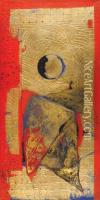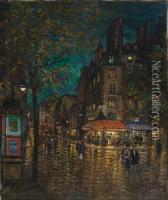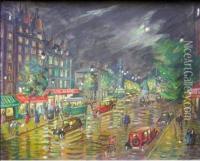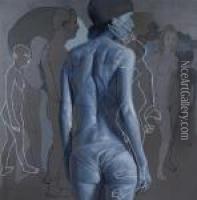Constantin Paintings
Constantin Brâncuși was a Romanian sculptor who is considered one of the pioneers of modernism and one of the most influential sculptors of the 20th century. Born on February 19, 1876, in the small village of Hobița, Romania, Brâncuși grew up in a family that practiced traditional woodworking, which would later influence his sculptural techniques and aesthetic.
After studying at the School of Arts and Crafts in Craiova and the National School of Fine Arts in Bucharest, Brâncuși sought a broader artistic environment and moved to Paris in 1904. There, he continued his education at the École des Beaux-Arts. His early works were more conventional, but he soon began to forge his distinct style, characterized by the use of simplified forms and smooth surfaces.
Brâncuși's work was heavily influenced by both Romanian folk art and the ancient art of cultures such as the Egyptians and Greeks. He was also inspired by African and Oriental art, which he encountered in Paris, particularly following his interaction with artists involved in the growing Primitivism movement. His sculptures often explored themes of flight, sleep, and the essence of humanity, and he is perhaps best known for his series of bird sculptures, which include 'Maiastra' and 'Bird in Space.'
A key aspect of Brâncuși's work was his focus on the essence of the subject, stripping away details to reach a core form, which he believed revealed the true reality of the object. This philosophical approach to sculpture was groundbreaking and laid the foundations for abstract art that would dominate the mid-20th century.
Notable works by Brâncuși include 'The Endless Column,' which is part of a sculptural ensemble in Târgu Jiu, Romania, dedicated to Romanian heroes of World War I. The ensemble also includes 'The Table of Silence' and 'The Gate of the Kiss.' His studio, near Montparnasse in Paris, became a hub for avant-garde artists and intellectuals, further cementing his role as a significant figure in the development of modern art.
Brâncuși's influence extended beyond sculpture to other art forms, and his emphasis on material and form had a lasting impact on the art world. Despite his success, he lived a modest life, dedicating himself to his art until his death on March 16, 1957, in Paris, France. His legacy is preserved in the Musée National d'Art Moderne in the Centre Georges Pompidou, Paris, where many of his works and reconstructed studio are on display.







